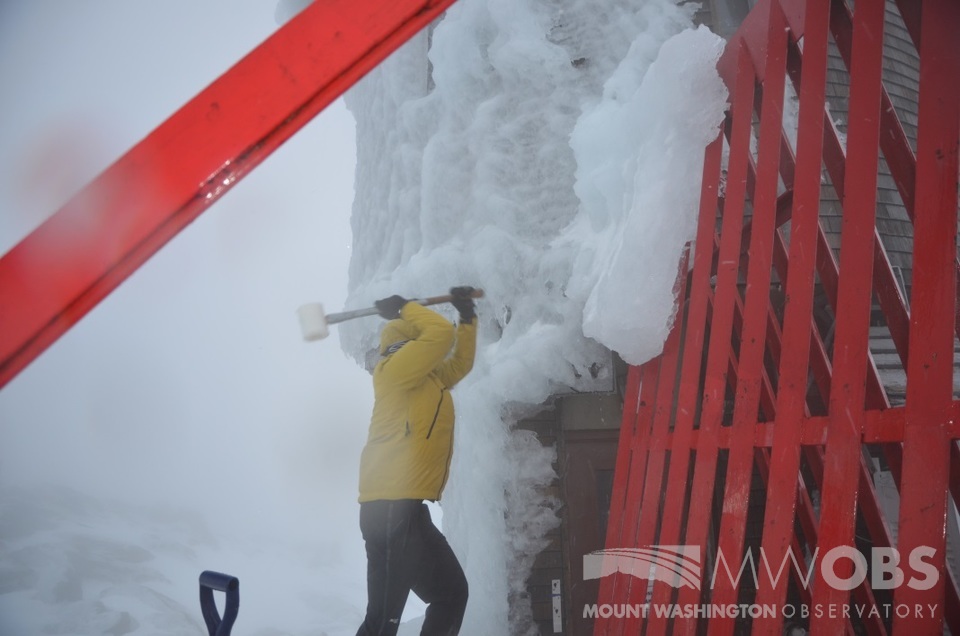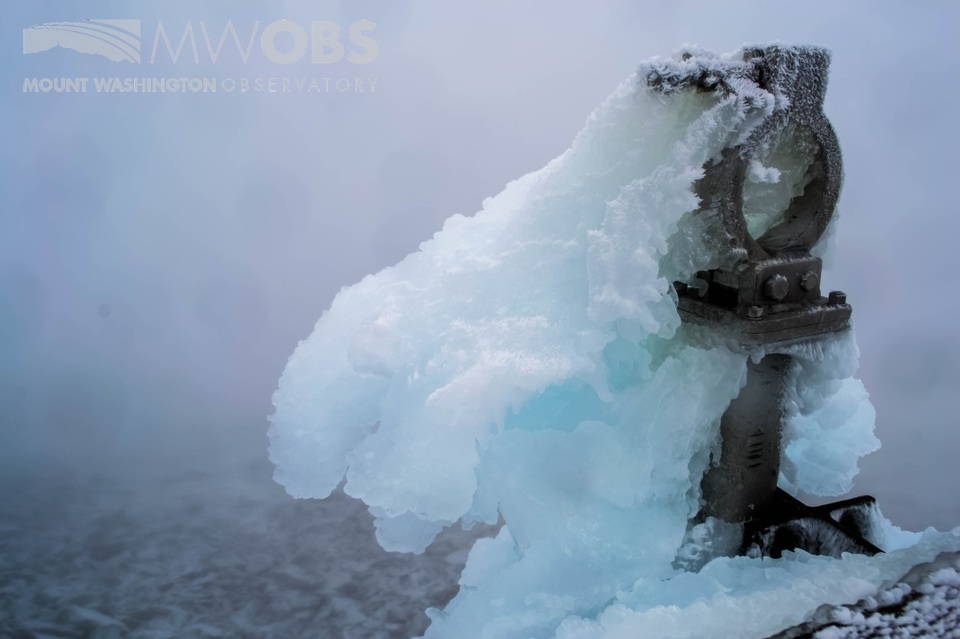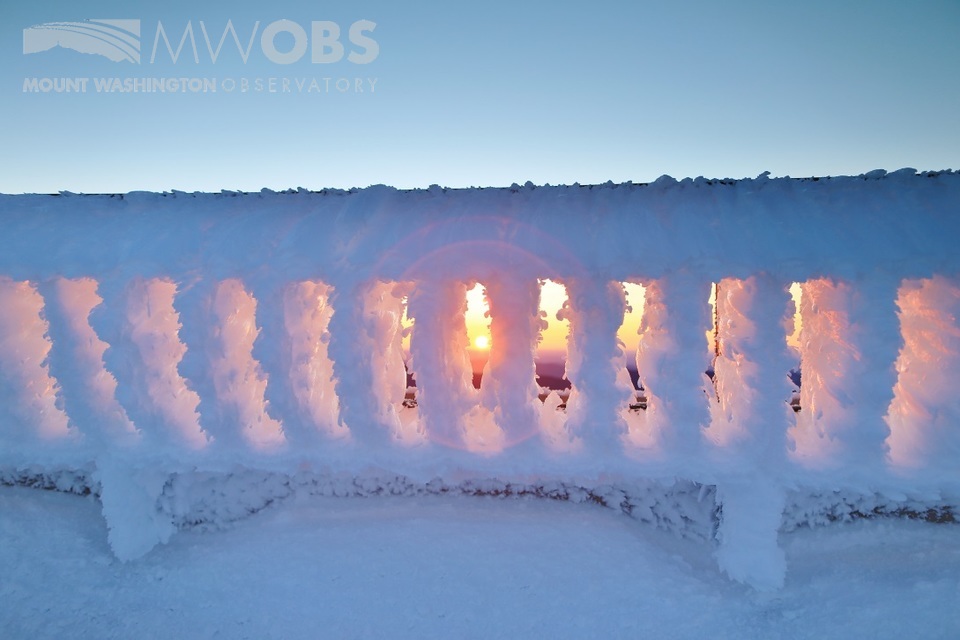Glaze vs. Rime … What’s the Difference?
2018-02-25 10:24:50.000 – Taylor Regan, Weather Observer
Up on the summit, we are no strangers to icing conditions. In fact, with an annual average temperature below freezing, and 2/3 of our days spent in the fog, it is arguably the most common weather phenomenon observed up here. And while the icing that we see generally takes on a spectrum of characteristics, governed by things like droplet size, temperature, wind speed, and any ongoing precipitation, it typically falls into one of two main categories: glaze vs. rime. Let’s have a look at what makes them different!
From AMS (American Meteorological Society), glaze ice is defined as “A coating of ice, generally clear and smooth, formed on exposed objects by the freezing of a film of supercooled water deposited by rain, drizzle, fog, or possibly condensed from supercooled water vapor.”
Up on the summit, heavy glazing events are some of the most challenging to combat, with rates of accretion upwards of 9 inches an hour. Glaze ice is heavy, and difficult to remove from instrumentation. Couple that with the fact that the winds are often blasting the summit at greater than hurricane force, and it quickly becomes a treacherous endeavor to leave the comfort of the weather room and venture out to de-ice the instrumentation. Below are a few images showing the removal of significant glaze on the A-frame which acts as an ice-break, as well as a view of some glaze accruing on a mounting bracket. Note how, in the second picture, the ice is so solidly packed that it is blue in the center. Glaze ice is much heavier than its counterpart rime.


From AMS, rime ice is defined as “a white or milk and opaque granular deposit of ice formed by the rapid freezing of super-cooled water drops as they impinge upon an exposed object.”
Opposed to glaze ice, rime tends to be much lighter and fluffier. Sometimes, large amounts can simply be brushed away with your hand. As the very small water droplets freeze, they are continually sculpted by the wind, giving rime structures a feathery appearance. Below are a few photos showing rime ice up on the summit, the first being a massive rime formation that built up on the summit sign, and the second being an image of the rimed-over railings on the observation deck. Pretty neat!

Taylor Regan, Weather Observer
Supporter Spotlight: Ryan Shepard
Supporter Spotlight: Ryan Shepard By Ryan Shepard and Carissa Milliman Ever since I was a kid, living in Western New York and growing up with lake effect snow, I thought harsh weather was incredibly
Supporter Spotlight: Erik Rider
Supporter Spotlight: Erik Rider By Wendy Almeida For Erik Rider, supporting Mount Washington Observatory comes from a lifelong fascination with weather and how it shapes daily life. Growing up along the Massachusetts coast, he
An Autumn Above the Clouds on Mount Washington
An Autumn Above the Clouds on Mount Washington By Cassie Farnsworth I don’t know how many times in life you get to say “it was exactly what I hoped it would be,” but my



